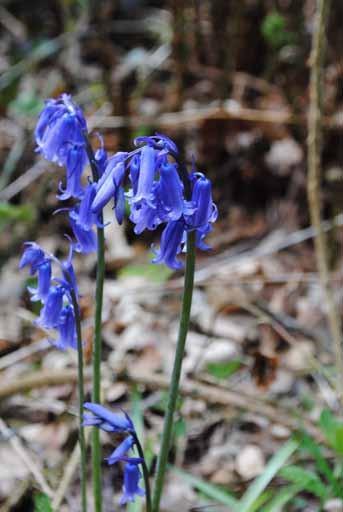
4 minute read
Shropshire
Wishes for improving botanical conservation in Shropshire
Ian Trueman
Advertisement
John Handley has asked me to make some of my own wishes on this topic – greatly aided by Fiona Gomersall’s thoughtful ideas on the same subject last time. My three are in addition to (and in part a development of) Fiona’s excellent items. My first wish would be for a new field-by-field survey of the county. When I was dragooned into helping with the first Shropshire Flora (happy day!) in the 1970s it was a place with many astounding highlights but the work on the general matrix of diversity was just beginning. That first Flora laid a firm foundation, and in addition Will Prestwood, the first (part-time) employee of the Wildlife Trust, undertook a field-by-field survey of the whole county in 1978 to 1980 together with Ed Owens, Pat Parker, John Albery, Catriona Paskell, Teresa Mahoney and Chris Leon, with further help from good old Manpower Services. The Museums Services at Ludlow, headed by Diana Kingham, surveyed the 10km squares in the south-east of the county. Some interesting names in that list! Somehow they covered over a million acres and this formed a ‘Domesday’ account of the county. From this directly sprang the county’s Wildlife Sites list and it formed an invaluable picture at a crucial time of change. Will says ‘It’s hard to recall now the sheer scale of change which was occurring in the 70s and 80s with drainage, ploughing, hedge removal and the like. Indeed, carrying out the survey was at times traumatic. I remember finding a group of acid grassland meadows in the Clun Forest full of Viola lutea and the like which had entirely disappeared when I returned a few weeks later, meadows, hedges and all. And watching Marehay Marsh below the Stiperstones being drained, with Narthecium, Viola palustris etc. being ploughed under. Awful!’ These processes continued, and because of the survey the Wildlife Trust was able to produce Losing Ground in 1989 which showed that of the 750 sites catalogued from the survey, 95 had already been lost and a further 133 damaged. I do not suppose that a repeat survey would bring many nice surprises, but it would at least give a lot more numbers to use in trying to protect what’s left. In particular, combined with maps of axiophyte species and Dan Wrench’s Opportunity Maps and satellite-derived data they would allow the further objective identification of the ecological network as it currently exists across the Shropshire landscape. This would be of enormous value in constructing a nature recovery network for the whole county. Adequately funded, it would also offer a wonderful opportunity for a new generation of ecologists and botanists (one might allow a few entomologists and ornithologists along also) to become expert. I’m told that Dan Wrench has been thinking about this also, so maybe it is a bit more than just a wish. My second wish connects with the analyses I did for the new Flora and Vegetation of Shropshire, which suggested to me that there is a another layer of botanical loss in the county, in the diversity associated with marginal habitats in the lowlands such as roadsides. Plants such as Cowslip Primula veris and Crosswort Cruciata laevipes, many of them not axiophytes but still nevertheless associated with relatively low, open vegetation of higher botanical diversity are suffering significant declines and more and more interminable stretches of Cow Parsley Anthriscus sylvestris and False Oatgrass Arrhenatherum elatius are appearing along our roads. The problem is general eutrophication – in this case probably mainly associated with nitrogen emanating from the use of diesel fuels. The problem, of course, extends much further than roadsides. The farmers are not blameless, although they are much more careful with fertilisers than in the past. Another infuriating source is the innocent-sounding Combined Sewer Overflow, which allows our water companies to discharge untreated sewage into a vast array of water courses in times of flood. So many of our most cherished
plant communities are associated with soils and substrates with low levels of available phosphates and nitrogen compounds and these are everywhere being flooded with fertility and becoming dominated by much narrower ranges of more competitive species. So my second wish is that human beings will learn very quickly to keep their fertility much more to themselves. Maybe, with the advent of the electric car, there is something to hope for, but time is of the essence! My third wish is for much more emphasis on alliance and interaction. It is not always easy and not all specialists are as tolerant and cooperative as all botanists are, without exception. However around the county there is a vast array of ornithologists, entomologists, geologists, archaeologists, historians, soil scientists, artists, musicians, educationists and rural economists (and more of whom I have omitted or am ignorant) who are all, at heart, driven by the same desire to conserve, protect and celebrate the natural world. In these days of climate change we need to start winning more often. How much stronger a force we would be if we all worked together!
Crosswort (Sarah Whild)

Bluebells (Bethany Perry) ANSWERS to SBS Spring 2021 Quiz Compiled by Ruth Dawes
1. Bluebell. 2. Verbascum. 3. Clematis. 4. Interrupted Clubmoss. 5. Genista. 6. Marigold. 7. Deptford Pink. 8. Carrot. 9. Bugle. 10. Arabis. 11. Meadow-rue. 12. Darnel. 13. U.S.S. Sequoia. 14. Privet Drive. 15. Daphne. 16. Spindle. 17. Juniper. 18. Birch. 19. Carnivorous. 20. Crow Garlic.

Juniper (Ruth Dawes)








